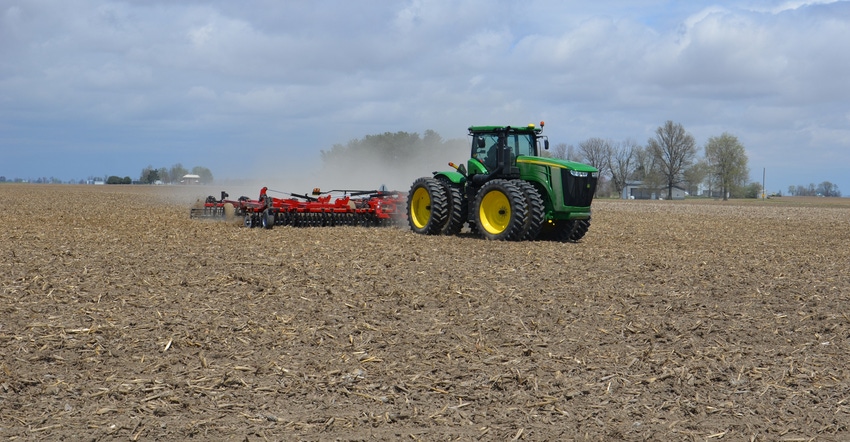
Should you plant or wait for drier conditions? Unless the weather pattern makes a miraculous shift, that may be the $6,400; $64,000 or $640,000 question, depending on how many acres of corn you must plant. The weather made an abrupt shift in May 2018. Will it shift again?
Dave Nanda, director of genetics for Seed Genetics-Direct, says that deciding when to pull the trigger and plant corn may be one of the bigger decisions you make this year.
“Planting when it might be wetter than you like can be a necessary evil,” Nanda says. “At some point you’ve got to get the seed in the ground. I believe you have more to gain by planting by mid-May, if it’s feasible at all, than by waiting for ideal conditions. Those ideal conditions may never come this year.”
As of May 5, the Corn Watch ’19 field in central Indiana was not yet planted. There simply hadn’t been a reasonable window in that part of the world for planting.
Corn Watch ’19 is sponsored by Seed Genetics-Direct, Jeffersonville, Ohio. It’s designed to help you think through management decisions on your farm based on what happens in one field which Nanda, as a consulting agronomist, watches closely throughout the season.
Decision time
What would Nanda do? If conditions are reasonable — not necessarily as good as you prefer — and the calendar is where it is today, May 14, he has this plan: “I would take my chances rather than wait for ideal conditions,” Nanda says. He has long been a proponent of the value of planting corn early whenever possible. At the same time, he’s a realist and understands the risks of soil compaction that can be created by planting in very undesirable conditions.
“Tacky soils could cause lower germination and erratic emergence,” he says. “On the other hand, if soils are dry on top but still on the wet side underneath, emergence may be more uniform.
“In either case, you will need to watch how much down pressure you apply on row units when planting this spring. Soil compaction will likely occur in both situations. Your goal should be minimizing it if you decide it’s in your best interest to plant and get seed in the ground.”
Nitrogen vs. planting
The operators of the Corn Watch ’19 field typically apply anhydrous ammonia preplant in mid- to late spring, before planting. The goal heading into April was to preplant nitrogen if possible. However, the operators have indicated that they may have to forgo preplant N applications and plant first, depending on how late it gets in the season. The plan would be to sidedress nitrogen soon after corn emerges.
“I would forgo preplant N after May 10 most years, which means I would forgo it now and move on to planting,” Nanda says. “I would hope to sidedress nitrogen later.”
However, he notes that it isn’t a cut-and-dried decision, and may vary depending upon the operation. “How many acres you have to plant and how big a planter you possess will play into it,” he observes. “After all, by this point, the goal is to get seed in the ground.”
About the Author(s)
You May Also Like




